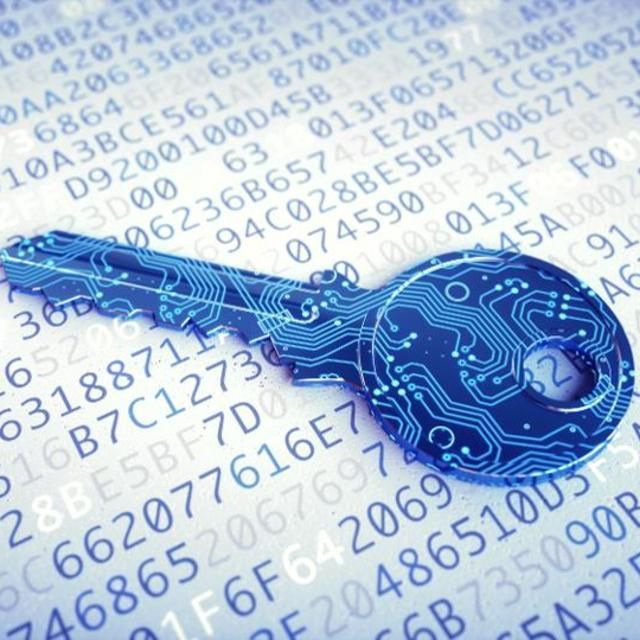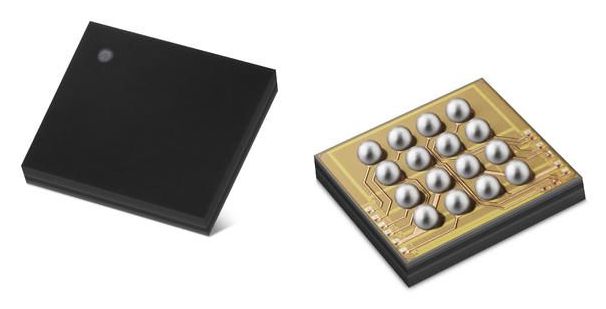“Once a chip is designed, adding security after the fact or making changes to address newly discovered threats is nearly impossible,” explains a DARPA spokesperson.


https://facebook.com/LongevityFB https://instagram.com/longevityyy https://twitter.com/Longevityyyyy https://linkedin.com/company/longevityy
- Please also subscribe and hit the notification bell and click “all” on these YouTube channels:
https://youtube.com/Transhumania
https://youtube.com/BrentNally
https://youtube.com/EternalLifeFan
https://youtube.com/MaxEternalLife
https://youtube.com/LifespanIO
https://youtube.com/LifeXTenShow
https://youtube.com/BitcoinComOfficialChannel
https://youtube.com/RogerVer
https://youtube.com/RichardHeart
https://youtube.com/sciVive
Church of Perpetual Life: https://www.youtube.com/COPL18
SHOW NOTES TIME STAMPS:
0:00 Sneak Peak & Longevity Team Intro
2:08 Bill Faloon Intro: https://lifeextension.com & https://age-reversal.net
3:00 Life extension inspiration
3:35 Challenge death norm, …” I am not going to let that happen…”
4:39 Safety in life extension medication
4:58 Metformin Safety
6:58 “FDA is an incompetent and corrupt federal bureaucracy”
8:35 Berberine alternative for Metformin?
10:20 Metformin role in AMPK enzyme
11:30 AMPK activation in intermittent fasting?
12:00 Bill Faloon personal experience with Metformin
14:30 “…Take Care of yourself today…” by getting annual blood tests to test for lipids, glucose, etc.
15:05 Optimized sleep strategies
17:27 Insomnia
18:20 Blue light exposure graphic
18:50 Watch Brent’s interview with The Sleep Doctor, Micael Brues: https://youtube.com/watch?v=7af2AAjL4b4&t=662s
20:13 Removing anxiety strategies for better sleep
22:04 Human age reversal project clinical trial update
24:50 Exosomes — Watch Brent’s interview with Kimera Labs exosomes CEO/founder Dr. Duncan Ross: https://youtube.com/watch?v=X8eIxo3eqvQ&t=10s
26:30 IF NOTHING ELSE KILLS US, AGING WILL
27:15 Subscribe to The Church of Perpetual Life YouTube channel: https://www.youtube.com/COPL18
28:45 TAME trial for Metformin https://ncbi.nlm.nih.gov/pmc/articles/PMC5943638
29:58 Dr. Nir Barzilai
33:01 Metformin not illegal for doctors to prescribe
34:01 Intermittent fasting benefits
34:46 autophagy
35:59 Is coffee bad for telomeres?
37:01 All types of coffee containing roasted beans contain some acrylamide
37:28 Chlorophyllin to guard against acrylamide
37:55 Watch Brent’s interview with Bill Faloon https://youtube.com/watch?v=sKjHJE8x1bs
38:08 History and future of The Church Of Perpetual Life
40:20 Dr. Aubrey de Grey connected Bill Faloon with Neal Francis Vanderee to start The Church of Perpetual Life! Watch Brent’s interview with Aubrey https://youtube.com/watch?v=TquJyz7tGfk&t=365s
42:10 Religion and afterlife argument for life extension & immortality
43:35 Bill says Dr. George Church feels all viruses may just disappear in next 3–4 years and aging may be vanquished in next 10 years
44:10 Quantum Archeology “…Quantum computer technology that will ultimately be our road to physical immortality. “
45:23 Nikolai Fyodorov’s view of how “Mankind was created to find a way to achieve abundant immortality”
46:52 Why do you want to live forever?
49:01 Do the impossible!
51:00 How can all of us contribute to this life extension movement?
52:28 Why religion, immortality and living a long life are already connected
55:02 Simulation theory
55:45 Rate of how fast technology is improving
58:51 Diet food recommendations
1:00:03 Dr. Eric Berg YouTube: What Really Happens When We Fast? https://youtube.com/watch?v=vhmtoAYVRSo
1:01:42 Death anxiety
1:05:20 Bill Faloon’s influence on his kids and their work
1:09:01 Longevity benefits of having kids
1:09:48 fetal stem cells
1:11:13 Clinical trial update & where to get tested
1:13:34 Bill Faloon’s most important advice
1:15:30 Figure out your chronotype https://thepowerofwhenquiz.com
1:16:18 Brain health tips: Lithium, blueberries, CoQ10 (Ubiquinol)
1:18:55 Conclusion
Researchers in Australia have achieved a world record internet speed of 44.2 terabits per second, allowing users to download 1,000 HD movies in a single second.
A team from Monash, Swinburne and RMIT universities used a “micro-comb” optical chip containing hundreds of infrared lasers to transfer data across existing communications infrastructure in Melbourne.

As far back as 2015, the National Institute of Standards and Technology (NIST) began asking encryption experts to submit their candidate algorithms for testing against quantum computing’s expected capabilities — so this is an issue that has already been front of mind for security professionals and organizations. But even with an organization like NIST leading the way, working through all those algorithms to judge their suitability to the task will take time. Thankfully, others within the scientific community have also risen to the challenge and joined in the research.
It will take years for a consensus to coalesce around the most suitable algorithms. That’s similar to the amount of time it took ECC encryption to gain mainstream acceptance, which seems like a fair comparison. The good news is that such a timeframe still should leave the opportunity to arrive at — and widely deploy — quantum-resistant cryptography before quantum computers capable of sustaining the number of qubits necessary to seriously threaten RSA and ECC encryption become available to potential attackers.
The ongoing development of quantum-resistant encryption will be fascinating to watch, and security professionals will be sure to keep a close eye on which algorithms and encryption strategies ultimately prove most effective. The world of encryption is changing more quickly than ever, and it has never been more important for the organizations dependent on that encryption to ensure that their partners are staying ahead of the curve.

As Internet of Things (IoT) devices rapidly increase in popularity and deployment, economic attackers and nation-states alike are shifting their attention to the vulnerabilities of digital integrated circuit (IC) chips. Threats to IC chips are well known, and despite various measures designed to mitigate them, hardware developers have largely been slow to implement security solutions due to limited expertise, high cost and complexity, and lack of security-oriented design tools integrated with supporting semiconductor intellectual property (IP). Further, when unsecure circuits are used in critical systems, the lack of embedded countermeasures exposes them to exploitation. To address the growing threat this poses from an economic and national security perspective, DARPA developed the Automatic Implementation of Secure Silicon (AISS) program. AISS aims to automate the process of incorporating scalable defense mechanisms into chip designs, while allowing designers to explore chip economics versus security trade-offs based on the expected application and intent while maximizing designer productivity.
Today, DARPA is announcing the research teams selected to take on AISS’ technical challenges. Two teams of academic, commercial, and defense industry researchers and engineers will explore the development of a novel design tool and IP ecosystem – which includes tool vendors, chip developers, and IP licensors – allowing, eventually, defenses to be incorporated efficiently into chip designs. The expected AISS technologies could enable hardware developers to not only integrate the appropriate level of state-of-the-art security based on the target application, but also balance security with economic considerations like power consumption, die area, and performance.
“The ultimate goal of the AISS program is to accelerate the timeline from architecture to security-hardened RTL from one year, to one week – and to do so at a substantially reduced cost,” said the DARPA program manager leading AISS, Mr. Serge Leef.

EXECUTIVE SUMMARY: The US Department of Defense has been working with American companies for the past year on a project to develop a prototype for a portable nuclear microreactor, a device intended for use by the US military in security scenarios around the world. The US Department of Energy is also involved in the project, with the aim of providing electricity to remote sites that are difficult to link to the grid. The project thus represents a symbiosis between military and civilian technological development.
A symbiotic relationship between military and civilian aspects of technological development gained momentum in the US after the end of WWII. This was particularly visible among applications in the communication, computing, and aerospace fields, but was also present in the field of nuclear technology. Some technology projects were presented as dual-use in order to justify the cost of their development.
One example of nuclear energy symbiosis was the development of nuclear power-generating reactors. By 1956, more than a decade after the destruction of the Japanese cities of Hiroshima and Nagasaki by nuclear bombs, only the UK’s Calder Hall nuclear power plant, which had four reactors each producing 60 MW electricity (MWe), was in operation. However, as of December 2019, 443 nuclear power generators were operating worldwide, with a total output of 395 gigawatts electric (GWe)—an average output of nearly 900 MWe per reactor.
Just as a literature buff might explore a novel for recurring themes, physicists and mathematicians search for repeating structures present throughout nature.
For example, a certain geometrical structure of knots, which scientists call a Hopfion, manifests itself in unexpected corners of the universe, ranging from particle physics, to biology, to cosmology. Like the Fibonacci spiral and the golden ratio, the Hopfion pattern unites different scientific fields, and deeper understanding of its structure and influence will help scientists to develop transformative technologies.
In a recent theoretical study, scientists from the U.S. Department of Energy’s (DOE) Argonne National Laboratory, in collaboration with the University of Picardie in France and the Southern Federal University in Russia, discovered the presence of the Hopfion structure in nano-sized particles of ferroelectrics—materials with promising applications in microelectronics and computing.

The 5G revolution has begun, and the first lines of phones that can access the next generation of wireless speeds have already hit the shelves. Researchers at The University of Texas at Austin and the University of Lille in France have built a new component that will more efficiently allow access to the highest 5G frequencies in a way that increases devices’ battery life and speeds up how quickly we can do things like stream high-definition media.
Smartphones are loaded with switches that perform a number of duties. One major task is jumping between networks and spectrum frequencies: 4G, Wi-Fi, LTE, Bluetooth, etc. The current radio-frequency (RF) switches that perform this task are always running, consuming precious processing power and battery life.
“The switch we have developed is more than 50 times more energy efficient compared to what is used today,” said Deji Akinwande, a professor in the Cockrell School of Engineering’s Department of Electrical and Computer Engineering who led the research. “It can transmit an HDTV stream at a 100 gigahertz frequency, and that is unheard of in broadband switch technology.”
Eric Klien
Simulation theory points out that we might be living in a giant computer simulation. Exponential technological growth and how far we’ve already come in so little time are big indicators that we can’t possibly imagine what the future of humanity would look like in 100 years, or better yet, 1,000 years!
Will we be able to create simulations so indistinguishable from reality that the characters will not be aware that they are being simulated? Today on Cognitive Culture, you’ll learn about why you’re not real!
PLEASE SUBSCRIBE! Let’s get the channel to 5K subs! I love you guys so much and your support means all of the things to me!!
Follow me on Instagram @cognitive.culture for inspiration!
Here are more of my videos and my sources of information for this video:

Samsung has launched a new secure element (SE) chip to protect private and sensitive data on mobile devices, the company said on Tuesday.
The chip, dubbed S3FV9RR, will be offered as a standalone turnkey with security software, Samsung said.
Common Criteria, which certifies the security level of IT products from EAL0 to EAL7 with seven being the most secure, gave the security chip a Common Criteria Evaluation Assurance Level (CC EAL) 6+ certification.